RTP Learning
Welcome to Reading the Pictures Learning, a gateway for academics to connect with Reading the Pictures for classroom, research, and other engagement purposes.
We’ve organized this page to feature Reading the Pictures resources available to academic users, and to identify how scholars, teachers, and students can interact with us as they engage issues concerning visual and media literacy.
You should also know that RTP-L is also a service, and we can provide you hands-on assistance. At the bottom of this page, we reference our “help desk.” If you’re interested in support at any time, we invite you to contact Katie Irwin, who is in charge of our academic outreach.
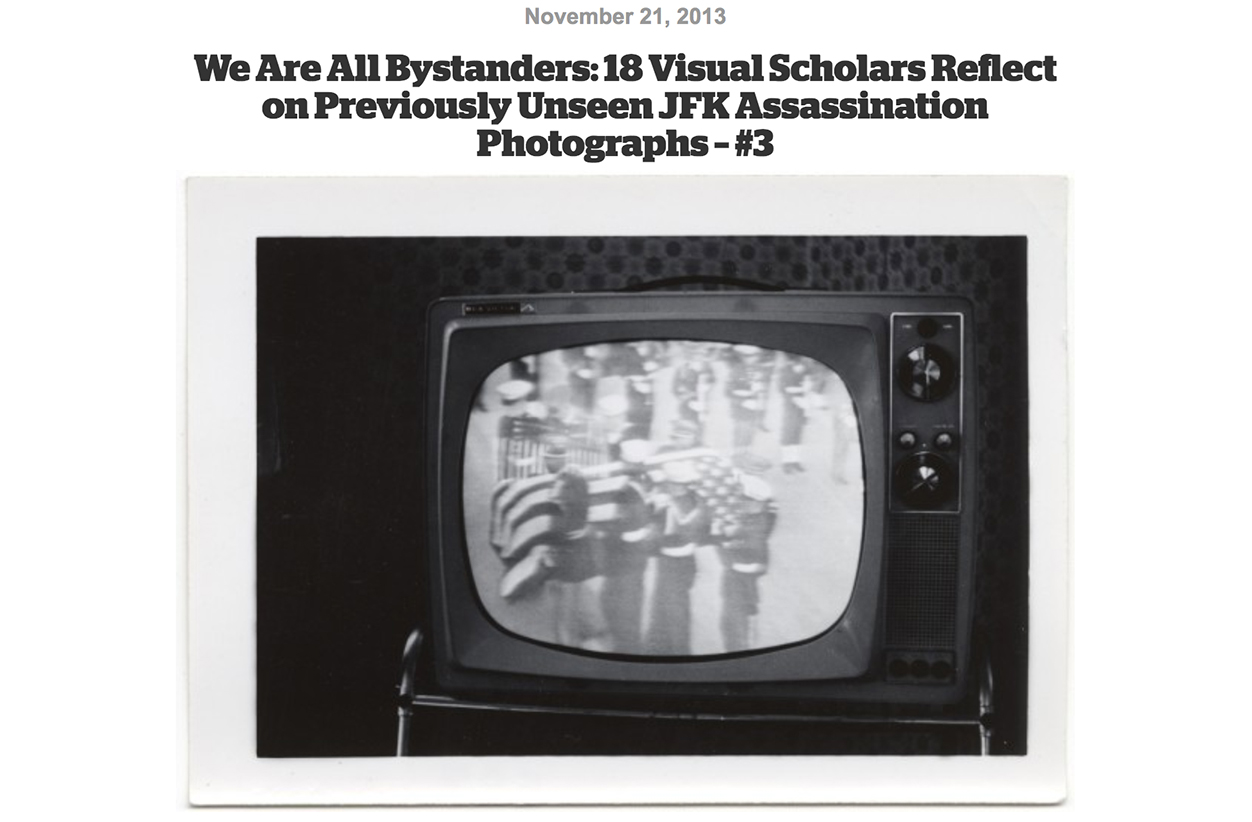
This title and graphic is from one of three posts dedicated to the 50th anniversary of the Kennedy assassination. We invited a group of distinguished visual scholars to provide us with a brief response to photographs from November 1963 that had only recently been discovered.
The easiest way to engage RTP Learning is to search our archive. It contains over 3,600 posts images and videos analyzing key news images dating back to 2004. We invite you to customize your searches for specific material. For instance, if you are interested in a particular scholar’s work, you can filter by that author’s contributions to Reading the Pictures. You can also filter by keyword and topic.
Subject Matter
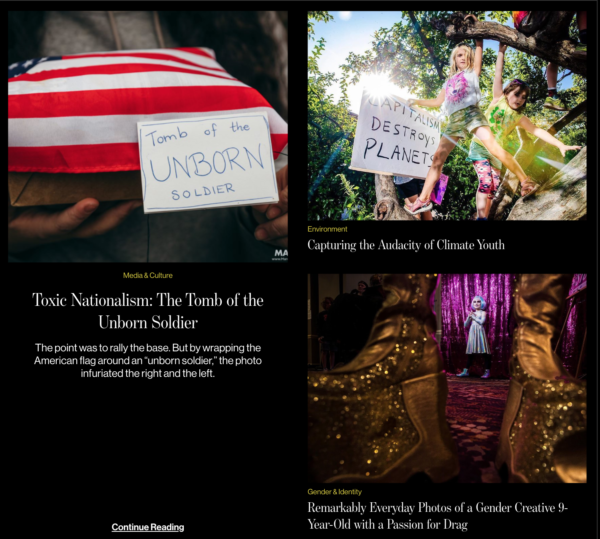
Are you looking for content for lectures and assignments? The Topics page is your point-of-entry to our most popular content.
As we and our contributors read the pictures, particular topics animate our published material. Each item below links you to recommended posts for each topic.
Environment, Media & Culture, Gender & Identity, Politics, Race & Ethnicity, Activism & Protest, Gun Violence, Immigration/Migration, War & Militarism, Visual Forensics, Visual Practices & Ethics
The Topics page offers additional posts.
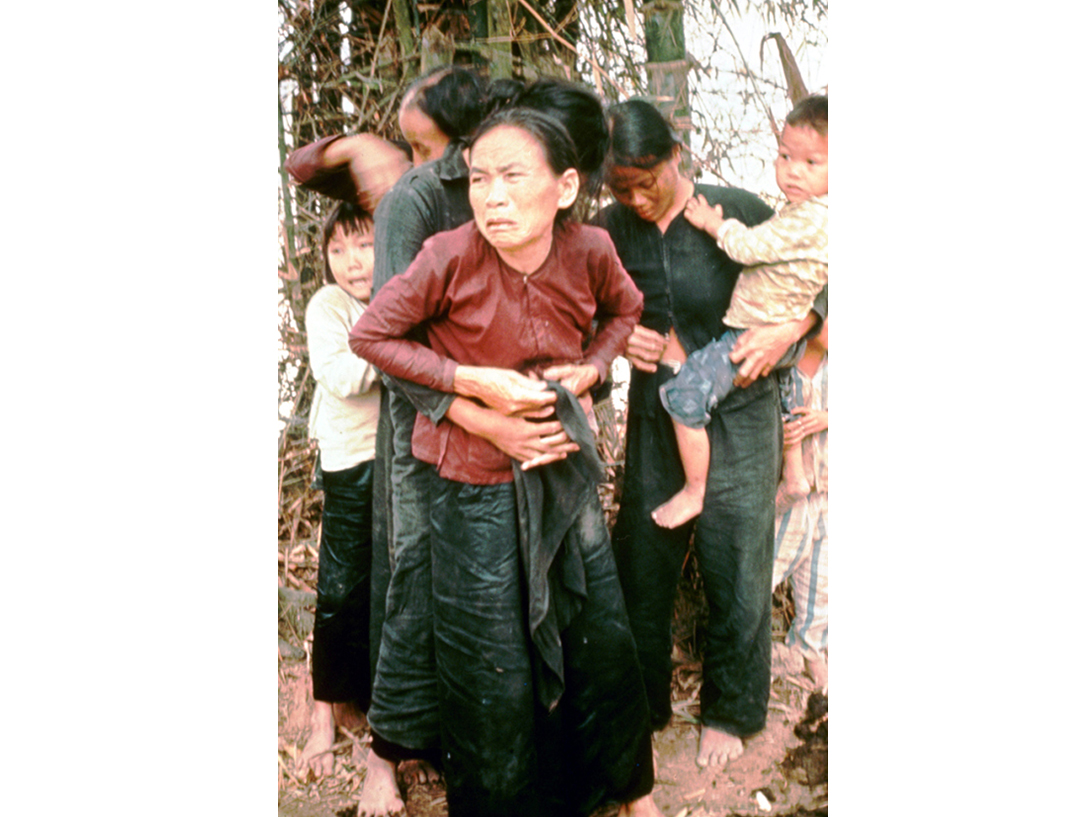
This photograph is the subject of our most widely read post, “My Lai, Sexual Assault and the Black Blouse Girl: Forty-Five Years Later, One of America’s Most Iconic Photos Hides Truth in Plain Sight”, by Valerie Wieskamp. It’s a classic study of denial, the Vietnam War, and military sexual abuse. Photo: Ronald Haeberle/LIFE/Getty.
Video Library
With expert analysis of images that point to significant cultural moments and themes, the Salon Archive provides video material that engages issues relevant to photojournalism, photography, media studies, and visual communication. The videos range in length from ten minutes to two hours, making them ideal for viewing in the classroom, at home, and on-the-go.
This audio slideshow, produced for Reading the Pictures (formerly BagNews) by Sandra Roa, won a Picture of the Year International (POYi) Multimedia category in 2011. It features the words and photos of Michael Kamber, who covered the Iraq War for The New York Times. The photos in the slideshow were all censored by the U.S. military.
Reading the Pictures features two regular programs. Chatting the Pictures (more information; archive) is a bi-weekly, highly produced and curated 10-minute look at three recent news photos. The Salon (more information; archive) is an online program, held once or twice a year, that brings together photographers, photo editors and visual scholars to examine the media framing of a major social or political issue. Follow the links above for more information.
Following each Salon, we produce two-minute video clips that capture the highlights of each photo conversation. The clips also provide the viewer “a tour” of the image choreographed to the insights of the panelists. This highlight clip features photographer Griselda San Martin discussing her portrait of a family separated by the border wall. It was one of the photographs discussed in our salon: The Visual Representation of the US/Mexico Border Wall in the Media.
Learning and Engagement
Scholars and teachers across the country regularly feature Reading the Pictures content in their research and classrooms. We welcome opportunities to connect with academic audiences concerned with media literacy, photography, and visual culture.
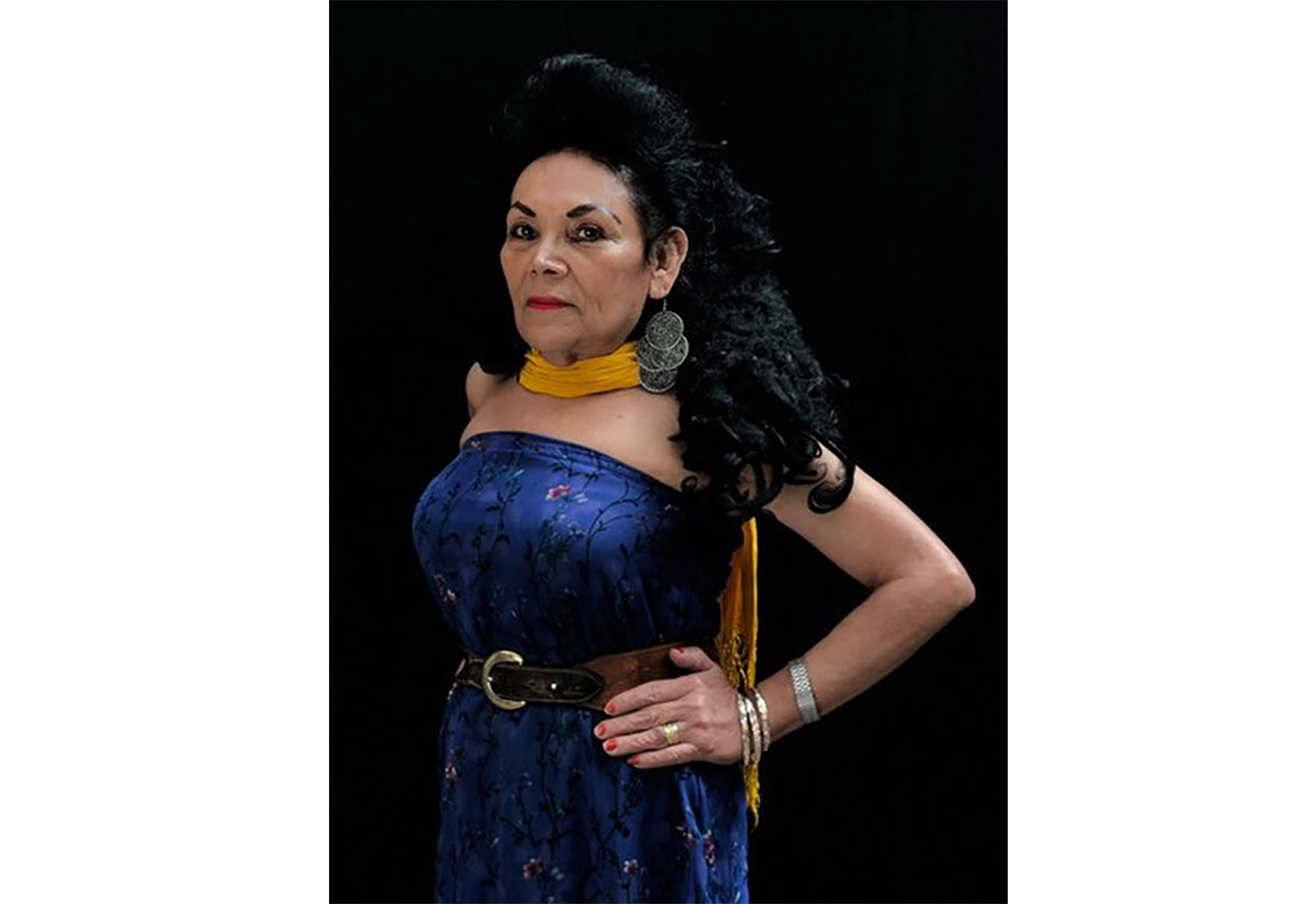
This photograph leads a post by Reading the Pictures contributor and visual scholar, Christa Olson, titled: “Portraits of Retired Sex Workers: The Gaze Turned the Other Way.” Christa is a visual and rhetorical scholar with expertise in Latin America, democracy, and post-colonialism. Photo: Adriana Zehbrauskas / New York Times.
Our academic contributors bring their expertise to analyze issues including immigration and migration, political campaigns, war photography, and social protests. Scholars who are interested in contributing a post can email Philip Perdue.
We have also started developing learning materials. Our COVID-19 learning package, for example, offers classroom activities, a lesson plan, discussion questions, and a project outline to support college-level students’ exploration of the coronavirus and visual culture. These resources provide a curated collection of some of our most popular COVID-related programming, and they are available to enhance learning about the earlier months of the global pandemic.
Reading the Pictures Publisher, Michael Shaw, and Editor, Meg Handler, are also available for video chats with students. Students can also participate in salon broadcasts, and teachers and student organizations can organize events around watching the latest salon together.
Everyone is invited to follow us on Twitter, Instagram, and Facebook to see our commentary in real time. Sign up for our Week in ReView Newsletter to ensure you don’t miss our latest work.
Events and Collaboration
Reading the Pictures Publisher, Michael Shaw, is a regular speaker at public lectures, academic conferences, and graduate seminars. He presents on topics concerning the significance of visual and media literacy in contemporary and public culture, and has been featured at the School of Visual Arts, Columbia University Graduate School of Journalism, the Photoville Photo Festival, and the Rhetoric Society of America conference. Email Meg Handler to discuss hosting Shaw or Handler for a public talk.
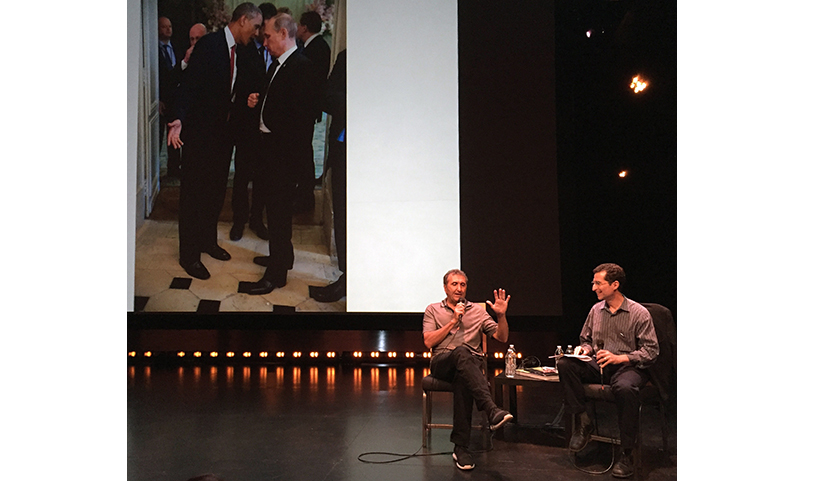
In 2017, Michael Shaw sat down with former White House photographer Pete Souza at the Photoville photo festival in Brooklyn. Before Souza’s book was released, they discuss some of the key images Souza took of Obama’s tenure.
Institutions may partner with Reading the Pictures to sponsor or co-sponsor a salon that explores specific images around a significant political or cultural issue. We have worked with the Open Society Foundation, the Columbia Journalism School, the University of Maryland, and the London College of Communications to create salons that looked at the visual framing of topics including science in the media, the US/Mexico border crisis, White House photo access, and the uprising in Ukraien’s Kiev Square.
Email Michael Shaw to start a conversation about sponsoring a salon.
Help Desk
Looking for resources that engage particular topics or concepts? Interested in developing reading lists, case studies, or other teaching materials? Does your research project explore issues that we cover and that might enhance your paper or presentation? Come talk to us at the Help Desk, where we are eager to help you find what you need. Email Katie Irwin.